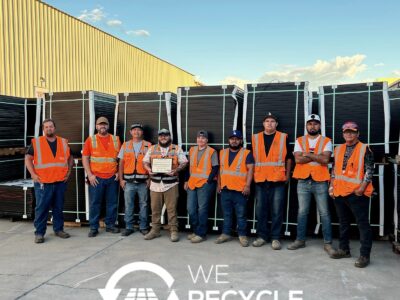Since the Paris Climate Agreement of 2015, the world has experienced a push for sustainable and environmentally-conscious transportation. Automotive companies are turning to all-electric vehicles to curb emissions, aircraft manufacturers like Boeing and Airbus have released futuristic designs for planes that boast alternative energy sources like solar and hydrogen fuel, and the future of the shipping industry is moving back to wind energy, perhaps surprisingly, in the form of sailboats.
The shipping industry’s shift back to sailing ships is an innovative solution to the International Maritime Organization’s pledge to decrease emissions by 50% by 2050.
The shipping industry currently accounts for about 3% of the global emissions, and while decarbonization is often a slow arduous process, a report from the Institution of Mechanical Engineers insists that returning to ships under sail may accelerate the process.
Thankfully, sail technology has vastly improved since the days of billowing canvas sheets strapped to the masts of wooden-hulled cargo freighters. Take Anemoi Marine as an example.
Their rotor sail design is inspired by the Flettner sail design developed in the 1920s and is currently being used to improve the fuel efficiency of modern freighters.
While not yet available to the market, it’s currently being tested on large cargo ships like the Afros, which regularly makes trips to Vancouver from the coast of China, and the results are very promising. The rotor sails saved the Afros 76 metric tons of fuel, a 12.5% decrease in their usual fuel expenditure on voyages between November 2019 and January 2020. On top of that, they helped save the Afros 235 metric tons of carbon, which is the equivalent of the electricity use of 157 American homes. Anemoi Marine CEO Kim Diederichsen estimates that they will begin to roll out their sails by 2022 and project that by the year 2025, they will be installing their sails in at least 50 vessels per year.
Anemoi Marine isn’t the only company developing sails to augment a vessel’s efficiency. Tire manufacturer, Michelin, has developed a modern sail project based on designs for wing sails used in the America’s Cup yacht racing competition.
Michelin’s “WindWings” are specially engineered to act like wings from an aircraft which create less drag, translating to more speed. This means a more efficient sail compared to traditional canvas sails.
Made with an undisclosed flexible material, Michelin designed the sails so that they inflate at the push of a button. The sails also trim themselves thanks to a series of sensors that measure wind speed and direction. Michelin projects that their puffy sails could reduce fuel use in cargo ships by up to 20%. Currently, the sails are still in development, although they tested a smaller version of the sail on a 40-foot boat in Switzerland, and intend to unveil the full sail, measuring between 3,000 and 5,000 square feet, in 2022.
Perhaps the most ambitious project under sail is the Oceanbird, a cargo ship designed by Swedish shipbuilders, Wallenius Marine, to be powered completely by sail.
The 200-meter long automotive carrier boasts a 7,000 car carrying capacity and telescopic wing sails that stretch as high as 105 meters above sea level, making it one of the tallest sailing ships ever built. Estimates from Wallenius project that the Oceanbird can make the Transatlantic journey in around 12 days, only slightly longer than the eight days it takes the average fuel-powered ship. However, Oceanbird aims to decrease carbon emissions by 90% compared to the average cargo ship.
While the Oceanbird is designed to be powered only by sail, it is equipped with a backup engine in case the ship faces a lack of wind. Additionally, the Oceanbird design is versatile. Wallenius Chief Operating Officer, Per Tunell, says it “could also be applied as a cruise vessel, a bulk carrier, a tanker,” and emphasizes that “one of the key conditions is that it shall be commercially feasible.” While the initial costs of the Oceanbird are slightly more expensive than a traditional carrier, Tunell stresses that the operating costs of such a ship are considerably lower. The Oceanbird is still in development, but Wallenius says it should be commercially available in 2024.
The market for shipping vessels under sail is rapidly expanding. Competitors for each of these designs are everywhere and hungry for their share of the new market. It shows the promise not only of the expansion of business but the seriousness by which this industry takes global climate change. In a few short years, shipping will be a green industry thanks to an industry under sail.





